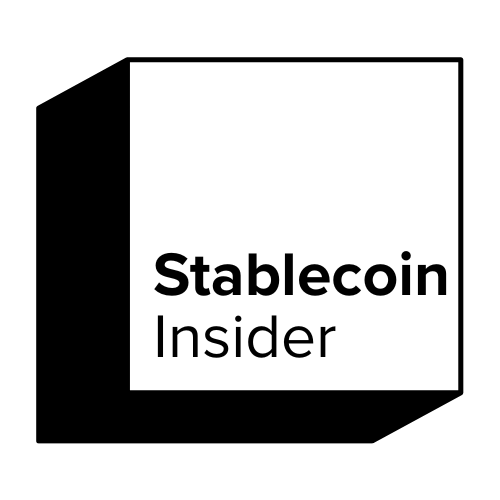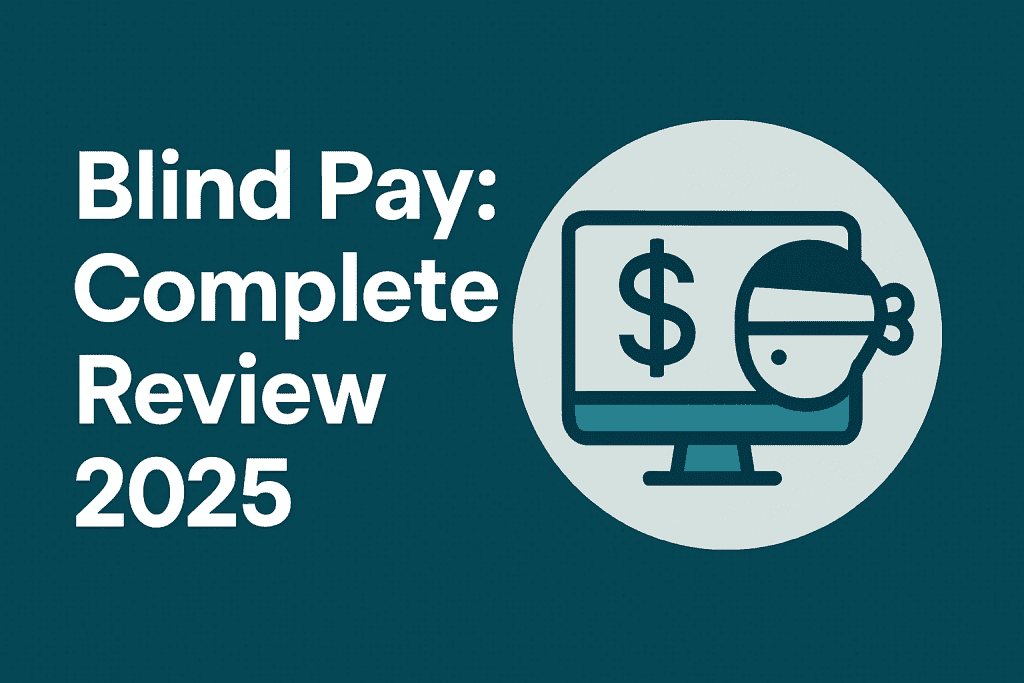Blind Pay is an innovative anonymous payment platform that’s taking center stage in 2025. As the digital economy continues to expand, the demand for secure and private financial transactions is at an all-time high. This review breaks down everything you need to know about Blind Pay, including how it works, who it’s best for, and how it compares to the competition.
Key Takeaways
- Blind Pay is a decentralized payment system designed to prioritize privacy and anonymity.
- It supports both crypto and fiat transactions, enabling global, fast, and secure transfers.
- The platform is especially valuable for privacy-conscious users, freelancers, and global merchants.
What Is Blind Pay?
Blind Pay is a decentralized payment platform focused on privacy and anonymity. Launched to fill a growing need for untraceable digital transactions, it leverages blockchain technology and cryptographic methods. Since its introduction, Blind Pay has gained popularity among users looking to avoid surveillance and protect their financial identities.
Founding and Background
Blind Pay was created by a team of privacy advocates and blockchain developers. Their mission was to offer a seamless payment experience without sacrificing user anonymity. In just a few years, Blind Pay has become a prominent player in the fintech space.
Key Milestones
- Beta release in late 2023
- Mainnet launch in mid-2024
- Cross-border fiat gateway introduced in early 2025
How Blind Pay Works
At its core, Blind Pay combines cryptographic privacy protocols with user-friendly functionality. Users can send and receive payments through crypto wallets or fiat gateways, all while remaining anonymous. The system is designed for both individuals and businesses that value financial privacy.
User Journey
Creating an account takes just a few minutes, requiring no personal data. Users simply:
- Set up a wallet
- Choose the asset to send or receive
- Generate a transaction link or scan a QR code
Supported Assets
Blind Pay supports a range of digital currencies, including:
- Bitcoin
- Ethereum
- Stablecoins like USDT and USDC
- Select fiat currencies via privacy-respecting gateways
Unique Features of Blind Pay in 2025
Blind Pay offers several standout features that separate it from traditional and crypto-based payment systems. These innovations are tailored for users who prioritize privacy, speed, and global access. As of 2025, Blind Pay has expanded its toolset to cater to both individual and business users.
Notable Innovations
- Anonymous crypto payments without revealing wallet addresses
- Multi-layered encryption that masks transactional data
- Fast, low-cost cross-border transactions
The platform is accessible via both desktop and mobile, with intuitive interfaces and 24/7 uptime.
Security and Privacy Measures
Security is one of Blind Pay’s core pillars. The platform uses cutting-edge privacy protocols to ensure users can transact without fear of exposure. Whether you’re a freelancer or an enterprise, Blind Pay provides tools to stay secure.
Key Measures
- End-to-end encryption on all transactions
- Decentralized infrastructure with no single point of failure
- Compliance with global data privacy standards
- Open-source code audited regularly by third parties
Pros and Cons of Blind Pay
While Blind Pay offers powerful tools for anonymous payments, it’s not without limitations. Understanding both the benefits and drawbacks can help users make an informed decision.
Pros
- High level of anonymity and privacy
- No KYC required for basic use
- Low fees and fast global payments
Cons
- Limited customer support options
- Still gaining adoption compared to larger players
- Regulatory scrutiny could pose challenges in some regions
Use Cases and Who Should Use It
Blind Pay is more than a crypto tool—it’s a financial solution for real-world problems. Its primary audience spans across several sectors and demographics. The platform is most useful to users operating in environments where privacy is either a legal necessity or a personal value.
Ideal Users
- Freelancers paid in crypto
- Cross-border e-commerce sellers
- Individuals in countries with restrictive banking laws
- Crypto users who value anonymity
Blind Pay vs Competitors
Blind Pay enters a competitive landscape filled with both traditional and blockchain-based alternatives. However, its focus on privacy gives it an edge in specific niches. Let’s see how it stacks up.
Traditional Payment Processors
- PayPal and Stripe offer ease but lack privacy
- Require full KYC and track transaction histories
Crypto Privacy Platforms
- Monero: Great for anonymity but lacks user-friendliness
- Tornado Cash: Powerful but controversial and often blocked
- Zcash wallets: Offer privacy but with limited adoption
Blind Pay combines usability with advanced privacy, bridging the gap.
User Reviews and Community Feedback (2025)
User sentiment toward Blind Pay has been largely positive. Many highlight the platform’s ease of use and strong privacy features. Online forums and social media show growing community support.
Highlights from Users
- “Finally, a private payment solution that’s easy to use!”
- “Great for remote work payments. No need to share personal info.”
- “Interface could be better, but privacy is unmatched.”
Blind Pay Tokenomics (if applicable)
Blind Pay has introduced its native utility token, primarily for internal use within the ecosystem. Token holders can access premium features, participate in governance, and receive staking rewards.
Token Utility
- Used to pay for advanced features
- Staked to earn transaction fee rewards
- Grants voting power on platform upgrades
Roadmap and Future Development
Blind Pay has achieved several major milestones, and the roadmap ahead is equally ambitious. From expanding its fiat gateways to launching a developer API, there’s a lot on the horizon.
What’s Coming in 2025
- Android/iOS wallet upgrades with biometric authentication
- Partnership with decentralized identity platforms
- Integration with privacy-preserving DeFi apps
How to Get Started with Blind Pay
Getting started with Blind Pay is simple and fast. The platform is designed with both tech-savvy users and beginners in mind. Here’s how to join.
Setup Guide
- Visit the official Blind Pay website
- Create a wallet or connect an existing one
- Start sending and receiving payments anonymously
Tutorials and video guides are also available on their support page.
Final Verdict: Is Blind Pay Worth It in 2025?
Blind Pay delivers on its promise of fast, secure, and private transactions. While it may face regulatory hurdles and lacks certain conveniences, its commitment to user privacy is commendable. It’s a strong option for anyone needing a reliable, anonymous payment solution in 2025.
Conclusion
As the financial landscape becomes more surveillance-driven, platforms like Blind Pay offer a breath of fresh air. Whether you’re a freelancer, entrepreneur, or crypto enthusiast, Blind Pay provides tools to take back control of your financial privacy. It’s a platform built for the future, with security and anonymity at its core.
Read Next:
FAQ: Blind Pay Review 2025
1. Is Blind Pay legal?
Yes, but legality depends on your country’s regulations. Always check local laws.
2. Does Blind Pay require KYC?
No KYC is needed for basic use, but advanced features might require identity verification.
3. What assets can I use with Blind Pay?
Users can send and receive BTC, ETH, stablecoins, and some fiat currencies.
4. Can I use Blind Pay for business?
Yes, many freelancers and small businesses use it for cross-border transactions.
5. How anonymous are Blind Pay transactions?
Blind Pay uses stealth addresses and encryption to ensure maximum privacy.
6. Is Blind Pay better than using Monero or Tornado Cash?
It depends on your use case—Blind Pay balances anonymity with usability.
7. What happens if I lose access to my Blind Pay account?
Since it’s non-custodial, recovery depends on whether you backed up your keys.
8. Can I integrate Blind Pay into my app or website?
Yes, APIs and plugins are available for integration.
9. Are there any fees for using Blind Pay?
Transaction fees are minimal and often lower than traditional platforms.
10. How does Blind Pay protect my data?
By not storing it in the first place. All data is encrypted and anonymized end-to-end.

